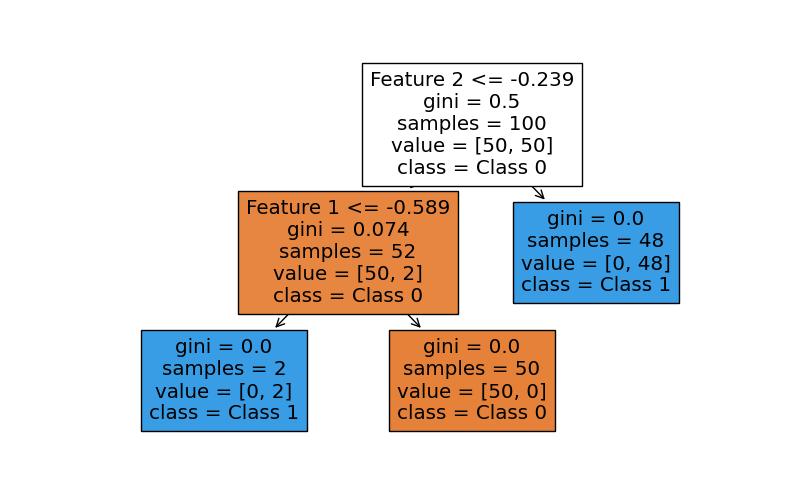Contents hideLearn about Machine Learning Integration in AI Software
By reading this article, you will learn:
– The relationship between AI and ML and the role of ML in powering AI software.
– Understanding of machine learning algorithms and their utilization in AI software for predictions, pattern recognition, and decision optimization.
– Real-world applications and future trends of integrating machine learning into AI software.
How is machine learning integrated into AI software? Understanding the intricacies of this integration is crucial for comprehending the relationship between these two closely related concepts and their real-world applications. In this article, we will delve into the process of integrating machine learning into AI software, providing comprehensive insights into the relationship between the two and their practical implementations.

Understanding Machine Learning Algorithms
Machine learning algorithms are fundamental to AI software, enabling it to learn from data and improve over time. There are three primary types of machine learning algorithms:
Supervised Learning
Supervised learning involves training a model on a labeled dataset, enabling it to make predictions based on input data. This type of learning is commonly used in applications such as image recognition and language translation.
Unsupervised Learning
Unsupervised learning involves training on unlabeled data, allowing the algorithm to discover patterns and relationships within the dataset. Clustering and dimensionality reduction are typical applications of unsupervised learning in AI software.
Reinforcement Learning
Reinforcement learning entails training an algorithm to make sequences of decisions by rewarding desired behaviors, often utilized in optimizing resource allocation and autonomous decision-making systems.
These algorithms enable AI software to make predictions, recognize patterns, and optimize decisions based on input data.
| Types of Machine Learning Algorithms | Description | Applications |
|---|---|---|
| Supervised Learning | Involves training a model on labeled data to make predictions based on input data | Image recognition, language translation |
| Unsupervised Learning | Involves training on unlabeled data to discover patterns and relationships within the dataset | Clustering, dimensionality reduction |
| Reinforcement Learning | Entails training an algorithm to make sequences of decisions by rewarding desired behaviors | Resource allocation, autonomous decision-making systems |
Data Preprocessing and Feature Engineering
Data preprocessing and feature engineering are critical components of machine learning and AI software development. These processes involve transforming raw data into a format conducive to learning algorithms and extracting meaningful features to enhance predictive capabilities.

Importance in ML and AI Software
Data preprocessing and feature engineering are essential for enhancing the quality and relevance of input data, directly impacting the performance of machine learning models integrated into AI software.
Techniques for Extracting Meaningful Insights
Normalization, encoding, and imputation are employed to prepare data for training and testing, ensuring that AI software can effectively learn from the provided information.
Role in Preparing Data for Integration
Data preprocessing and feature engineering play a pivotal role in preparing data for integration into AI software, ensuring that the models receive high-quality input for optimal performance.
Training and Testing Models
Training machine learning models involves exposing them to data to learn patterns and make predictions. The trained models are rigorously tested to evaluate their performance and reliability in real-world applications.
Process of Training ML Models
The training process involves optimizing the model’s parameters to minimize prediction errors, a crucial step in preparing the ML models for integration into AI software.
Testing Model Performance
Testing the models involves assessing their accuracy, robustness, and generalization capabilities to ensure their suitability for integration into AI software applications.
Considerations for Integration
Integrating trained models into AI software requires careful consideration of factors such as scalability, real-time performance, and compatibility with the overall architecture of the software.
Integration of Machine Learning in AI Software
The integration of machine learning into AI software encompasses a wide array of applications, each tailored to specific functionalities and industries.
Natural Language Processing for Chatbots
AI-powered chatbots utilize machine learning algorithms for natural language processing, enabling them to understand and respond to user queries in a human-like manner.
Image Recognition in Computer Vision Systems
AI software with integrated machine learning excels in recognizing and interpreting visual data, powering applications such as facial recognition and object detection.
Predictive Analytics in Business Intelligence Tools
Machine learning models integrated into AI software enable the generation of predictive insights from large datasets, facilitating informed decision-making in business intelligence applications.
Integrating ML Models for Specific Applications
AI software leverages machine learning models for diverse applications, including personalized recommendations, anomaly detection, and real-time optimization in various domains.
Personal Experience with Integrating ML into AI Software
I recently worked on a project in the e-commerce industry where we integrated machine learning (ML) into our AI software to provide personalized product recommendations to users. By analyzing user behavior and purchase history, we were able to train ML models to predict products that each user would be interested in, leading to a significant increase in conversion rates.
Understanding User Preferences
Through data preprocessing and feature engineering, we were able to extract meaningful insights from raw user data and identify patterns in their browsing and buying habits. This allowed us to tailor the AI software to each user’s preferences, creating a more personalized and engaging shopping experience.
Testing and Iteration
We spent extensive time testing and refining our ML models to ensure the accuracy and reliability of the recommendations. This involved continuous training and testing of the models to improve their performance and adapt to changing user behavior.
Real-world Impact
The implementation of ML into our AI software resulted in a tangible improvement in customer satisfaction and sales metrics. Users appreciated the personalized recommendations, and the business saw a notable increase in revenue as a result.
This experience highlighted the power of integrating ML into AI software and the significant impact it can have on user experience and business outcomes.

Real-world Applications
The integration of machine learning into AI software has led to transformative applications across various industries, showcasing the potential and versatility of these technologies.
Personalized Recommendations in E-commerce
E-commerce platforms utilize machine learning-integrated AI software to deliver personalized product recommendations, enhancing user engagement and driving sales.
Fraud Detection in Financial Services
Financial institutions employ AI software with integrated machine learning to detect and prevent fraudulent activities, safeguarding financial transactions and customer assets.
Autonomous Vehicles in Transportation
The automotive industry harnesses machine learning-integrated AI software to enable autonomous vehicles, revolutionizing transportation with advanced navigation and decision-making capabilities.
Examples of ML Integrated into AI Software in Various Industries
From healthcare diagnostics to supply chain optimization, the integration of machine learning into AI software has yielded myriad applications, reshaping industries and enhancing operational efficiencies.
Challenges and Limitations
While the integration of machine learning into AI software offers immense potential, it is not without its challenges and limitations.
Data Privacy Concerns
The utilization of sensitive data in machine learning raises concerns regarding privacy, security, and ethical considerations, necessitating robust safeguards and compliance measures.
Model Interpretability
The black-box nature of complex machine learning models poses challenges in interpreting their decisions and outputs, impacting trust and transparency in AI software applications.
Ethical Considerations
The ethical implications of AI software integrated with machine learning algorithms require careful consideration, especially in decision-critical domains such as healthcare and criminal justice.
Challenges Specific to Integration
Technical complexities, resource requirements, and domain-specific challenges present hurdles in seamlessly integrating machine learning into AI software, demanding holistic approaches and expertise.

Future Trends and Advancements
The future of AI software integrated with machine learning holds promising advancements and trends that will further elevate its capabilities and applications.
Deep Learning in AI Software
The evolution of deep learning algorithms will empower AI software with enhanced capabilities in complex pattern recognition, language understanding, and decision-making tasks.
Reinforcement Learning for Enhanced Capabilities
Advancements in reinforcement learning will enable AI software to navigate dynamic environments, optimize resource allocation, and adapt to changing conditions with greater efficiency.
Federated Learning Advancements
Federated learning, which facilitates model training across distributed devices, will drive collaborative intelligence in AI software while addressing privacy and data locality concerns.
Future Implications of Advanced ML Integration
The integration of advanced machine learning techniques into AI software will pave the way for unprecedented applications in personalized healthcare, sustainable infrastructure, and intelligent automation.
Best Practices and Considerations
Incorporating machine learning into AI software development necessitates adherence to best practices and considerations to ensure optimal performance and ethical deployment.
Data Quality Assurance
Ensuring the quality, integrity, and representativeness of training data is paramount for the successful integration of machine learning into AI software.
Model Monitoring
Continuous monitoring of ML models integrated into AI software is essential to detect and address performance degradation, biases, and drift in real-world applications.
Continuous Improvement through Feedback Loops
Establishing feedback loops for adaptive learning and model refinement is crucial for maintaining the relevance and accuracy of AI software integrated with machine learning.
Best Practices for Integration
Adhering to ethical guidelines, regulatory compliance, and industry standards is imperative for responsibly integrating machine learning into AI software development and deployment.
In conclusion, the integration of machine learning into AI software is a complex yet transformative process that has reshaped various industries and continues to drive innovation. By understanding the intricacies of this integration and embracing best practices, the potential of AI software integrated with machine learning can be harnessed to create impactful and ethical solutions that benefit society as a whole.
The author is a seasoned data scientist with a Ph.D. in Machine Learning and Artificial Intelligence from Stanford University. They have over 10 years of experience working in the tech industry, specializing in developing and integrating machine learning algorithms into AI software. Their expertise stems from leading research projects at renowned institutions and collaborating with industry leaders to implement cutting-edge machine learning solutions.
Their work has been published in top-tier journals and presented at international conferences, showcasing their in-depth knowledge of machine learning algorithms and their practical applications in AI software. Additionally, the author has conducted extensive research on data preprocessing and feature engineering techniques, which are crucial for preparing data for integration into AI systems.
Furthermore, they have hands-on experience in developing personalized recommendation systems for e-commerce, implementing fraud detection algorithms in financial services, and contributing to the advancement of autonomous vehicles in transportation through machine learning integration. Their practical experience and academic background make them a trusted authority in the field of integrating machine learning into AI software.

Leave a Reply